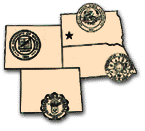Animal Science, Department of

Range Beef Cow Symposium
Date of this Version
December 1991
Document Type
Article
Abstract
The management of fat content of the carcass, both subcutaneous fat and marbling, will be the challenge of the future for the cattle feeders of the U.S. The cattle feeder will have to juggle carcass weights, quality grade and yield grade in order to determine the appropriate end point for fed cattle. The input data for decisions will be the Choice-Select spread, yield grade discounts, feed costs, interest costs, cost of feeder cattle and genetic potential of the cattle in question.
There is a perception among cattle feeders that, in the future, the packers will simply dictate the type of cattle they wish to kill, and it will be up to cattle feeders to hit that low-fat target. Nothing could be further from the truth. The market will get more complicated, not less complicated. The packing industry will undoubtedly set up a scale of discounts for both quality and yield grades with minimum and maximum carcass weights. It will not always be in the best interests of feeders to exactly hit those targets. Cattle feeders will feed all cattle available. Since not all cattle will readily find a home on the specification list of a packer, it will be up to feeders to manage the end point of those cattle as close to target as is economically feasible. Discounts may be a more acceptable way to go rather than using the extra feed needed to gain a par price. Those decisions will be part of the juggling act that cattle feeders will do as an extra part of their routine management.
Increasing demand by foreign consumers for a higher quality product will complicate many of the management decisions. If we were moving to a product with a minimum acceptable level of quality and lowered levels of fat, the management job would not be difficult, as we would select for muscling and away from excess fat to hit our targets. The demand for higher quality will cause feeders to increase the subcutaneous fat on certain genetic types of cattle in hopes of developing a higher percentage of cattle reaching the high quality target. These cattle may receive a quality grade premium and a yield grade discount. Thus, the relative size of the premiums and discounts will have to be weighed against the increased cost of feed to create the fat.


Comments
Published for Proceedings, The Range Beef Cow Symposium XII December 3, 4 & 5, 1991, Fort Collins, Colorado.